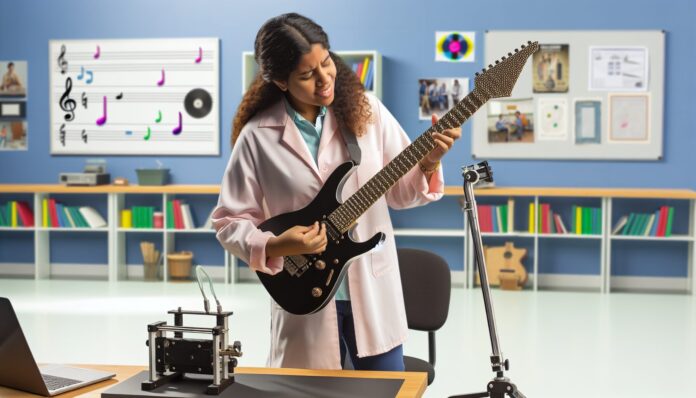What happens when musical passion meets engineering innovation? For Binghamton University student Matthew Hettler, the answer is a fully functional 3D-printed electric guitar. This unique project showcases the creative potential of additive manufacturing in the hands of a determined student with a love for both music and technology.
3D Printing Meets Musical Engineering
Matthew Hettler, a senior majoring in mechanical engineering at Binghamton University, has always been passionate about music. As a guitarist and a member of the university’s rock ensemble, he wanted to combine his technical skills with his musical interests. The result? A custom-designed, 3D-printed electric guitar that not only looks impressive but also plays like a traditional instrument.
Hettler began the project as part of his senior capstone design course. He used CAD software to model the guitar body and neck, ensuring the design would accommodate standard guitar hardware and electronics. The body was printed using a Markforged 3D printer, which allowed for high-strength composite materials to be used, ensuring durability and structural integrity.
Design Challenges and Solutions
Creating a 3D-printed guitar isn’t as simple as printing a plastic shell. Hettler had to consider the mechanical stresses that a guitar endures, especially the tension from the strings. To address this, he reinforced the neck and body with continuous carbon fiber, a feature made possible by the Markforged printer. This reinforcement provided the necessary strength while keeping the instrument lightweight.
Another challenge was ensuring the guitar’s playability. Hettler paid close attention to the neck’s geometry, fret placement, and overall ergonomics. He also integrated a truss rod into the neck to allow for adjustments, just like in traditional guitars. The electronics, including pickups and wiring, were installed after printing, using standard components compatible with the custom body.
Applications of 3D Printing in Music and Beyond
Hettler’s project is a prime example of how 3D printing can be used to create functional, customized musical instruments. While 3D-printed instruments have been explored before, this project stands out for its attention to detail, structural integrity, and real-world usability. It demonstrates how additive manufacturing can be used not just for prototyping, but for producing end-use products in creative fields.
Beyond music, the principles applied in this project have broader implications. The use of composite materials, custom design, and rapid prototyping can be applied to industries such as aerospace, automotive, and consumer products. As 3D printing technology continues to evolve, its role in personalized manufacturing and product innovation will only grow.
Inspiring the Next Generation of Engineers
Hettler’s work has garnered attention on campus and beyond, inspiring fellow students and faculty alike. His guitar is not only a testament to his engineering skills but also a symbol of interdisciplinary creativity. By merging art and science, he has opened the door for future projects that blend technical expertise with personal passion.
As he prepares to graduate, Hettler hopes to continue exploring the intersection of engineering and design. His 3D-printed guitar serves as a powerful reminder that innovation often begins with a simple idea—and the willingness to bring it to life.
Source: Binghamton University

